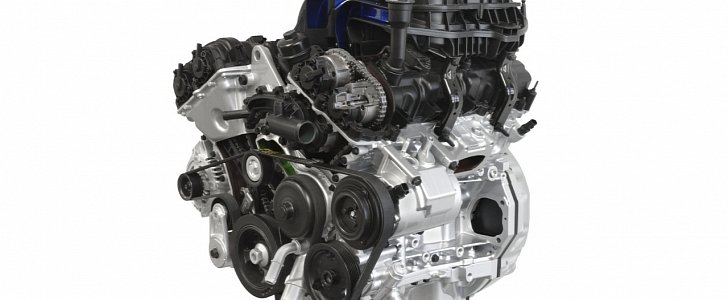After celebrating five million units built over the course of the last four years, the Pentastar V6 engine of the FCA group is getting a couple of significant updates this year, that are supposed to keep it going in the next few years.
Just as we were telling you a while back, the revised units will feature a new intake that is supposed to manage the air a lot better. That’s just one of the improvements, though, the plants’ efficiency being reportedly improved by more than 6 percent.
Other changes made the low-RPM torque go up by 15 percent and all of this was achieved while also dropping no four pounds off the total weight. Yes, that’s not a huge decrease but you need to know that at the same time, around 13 pounds of additional content were added to the powerplant.
The engine block of the 60-degree V6 is still made of aluminum and the power output should also go up by a small degree. For example, the 2016 Jeep Grand Cherokee that is bound to be unveiled later this year, will use the new Pentastar and get a bump in HP from 290 to 295.
What’s even more interesting is that all of these improvements have been done without going for direct injection. While at first, direct injection may seem like a good solution for more power and better efficiency, on the long run it can lead to a couple of problems.
For example, it has been reported lately that cars using this tech have a tendency of accumulating residue on the valves, therefore leading to problems in the long run. That’s something that doesn’t happen with naturally aspirated units, though. Furthermore, with direct injection, the way fuel is delivered and burned will result in abrasive particulates that can get into all sorts of places (like piston rings and engine oil) where they can cause even bigger trouble.
What this brings to the table is a requirement for less oil in order to function, improving efficiency, as it was asked. Furthermore, the new VVT will not operate at up to 70 degrees instead of 50 as it was until now.
The variable valve lift design was changed, bringing a 2.7 percent increase in efficiency thanks to higher valve lift that goes hand in hand with the car’s needs in terms of power and torque.
Last but not least, the engineers had to take a look at reducing friction as well as that too could add up to an efficiency boost. Therefore, the solutions they found include applying new material on the timing-guide faces, using low-tension piston rings, carbon-coated wrist pins, and new valve springs.
All in all, these improvements should really bring the Chrysler Pentastar into the 21st century and continue its impressive sales tally.
Other changes made the low-RPM torque go up by 15 percent and all of this was achieved while also dropping no four pounds off the total weight. Yes, that’s not a huge decrease but you need to know that at the same time, around 13 pounds of additional content were added to the powerplant.
The engine block of the 60-degree V6 is still made of aluminum and the power output should also go up by a small degree. For example, the 2016 Jeep Grand Cherokee that is bound to be unveiled later this year, will use the new Pentastar and get a bump in HP from 290 to 295.
What’s even more interesting is that all of these improvements have been done without going for direct injection. While at first, direct injection may seem like a good solution for more power and better efficiency, on the long run it can lead to a couple of problems.
For example, it has been reported lately that cars using this tech have a tendency of accumulating residue on the valves, therefore leading to problems in the long run. That’s something that doesn’t happen with naturally aspirated units, though. Furthermore, with direct injection, the way fuel is delivered and burned will result in abrasive particulates that can get into all sorts of places (like piston rings and engine oil) where they can cause even bigger trouble.
Better Variable Valve Timing and Lift Systems
The engineers were also handed the task to make the engine more efficient and valves play a crucial role here. According to Chrysler, the new Pentastar models feature a new Variable Valve Timing system that has torque-activated cam phasers.What this brings to the table is a requirement for less oil in order to function, improving efficiency, as it was asked. Furthermore, the new VVT will not operate at up to 70 degrees instead of 50 as it was until now.
The variable valve lift design was changed, bringing a 2.7 percent increase in efficiency thanks to higher valve lift that goes hand in hand with the car’s needs in terms of power and torque.
Last but not least, the engineers had to take a look at reducing friction as well as that too could add up to an efficiency boost. Therefore, the solutions they found include applying new material on the timing-guide faces, using low-tension piston rings, carbon-coated wrist pins, and new valve springs.
All in all, these improvements should really bring the Chrysler Pentastar into the 21st century and continue its impressive sales tally.
